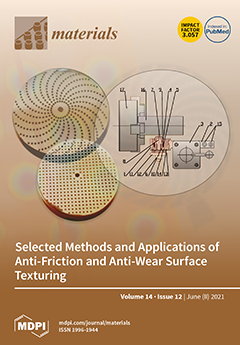A bio-inspired nanofibrous MnO
2-TiO
2-carbon composite was prepared by utilizing natural cellulosic substances (e.g., ordinary quantitative ashless filter paper) as both the carbon source and structural matrix. Mesoporous MnO
2 nanosheets were densely immobilized on an ultrathin titania film precoated
[...] Read more.
A bio-inspired nanofibrous MnO
2-TiO
2-carbon composite was prepared by utilizing natural cellulosic substances (e.g., ordinary quantitative ashless filter paper) as both the carbon source and structural matrix. Mesoporous MnO
2 nanosheets were densely immobilized on an ultrathin titania film precoated with cellulose-derived carbon nanofibers, which gave a hierarchical MnO
2-TiO
2-carbon nanoarchitecture and exhibited excellent electrochemical performances when used as an anodic material for lithium-ion batteries. The MnO
2-TiO
2-carbon composite with a MnO
2 content of 47.28 wt % exhibited a specific discharge capacity of 677 mAh g
−1 after 130 repeated charge/discharge cycles at a current rate of 100 mA g
−1. The contribution percentage of MnO
2 in the composite material is equivalent to 95.1% of the theoretical capacity of MnO
2 (1230 mAh g
−1). The ultrathin TiO
2 precoating layer with a thickness ca. 2 nm acts as a crucial interlayer that facilitates the growth of well-organized MnO
2 nanosheets onto the surface of the titania-carbon nanofibers. Due to the interweaved network structures of the carbon nanofibers and the increased content of the immobilized MnO
2, the exfoliation and aggregation, as well as the large volume change of the MnO
2 nanosheets, are significantly inhibited; thus, the MnO
2-TiO
2-carbon electrodes displayed outstanding cycling performance and a reversible rate capability during the Li
+ insertion/extraction processes.
Full article






